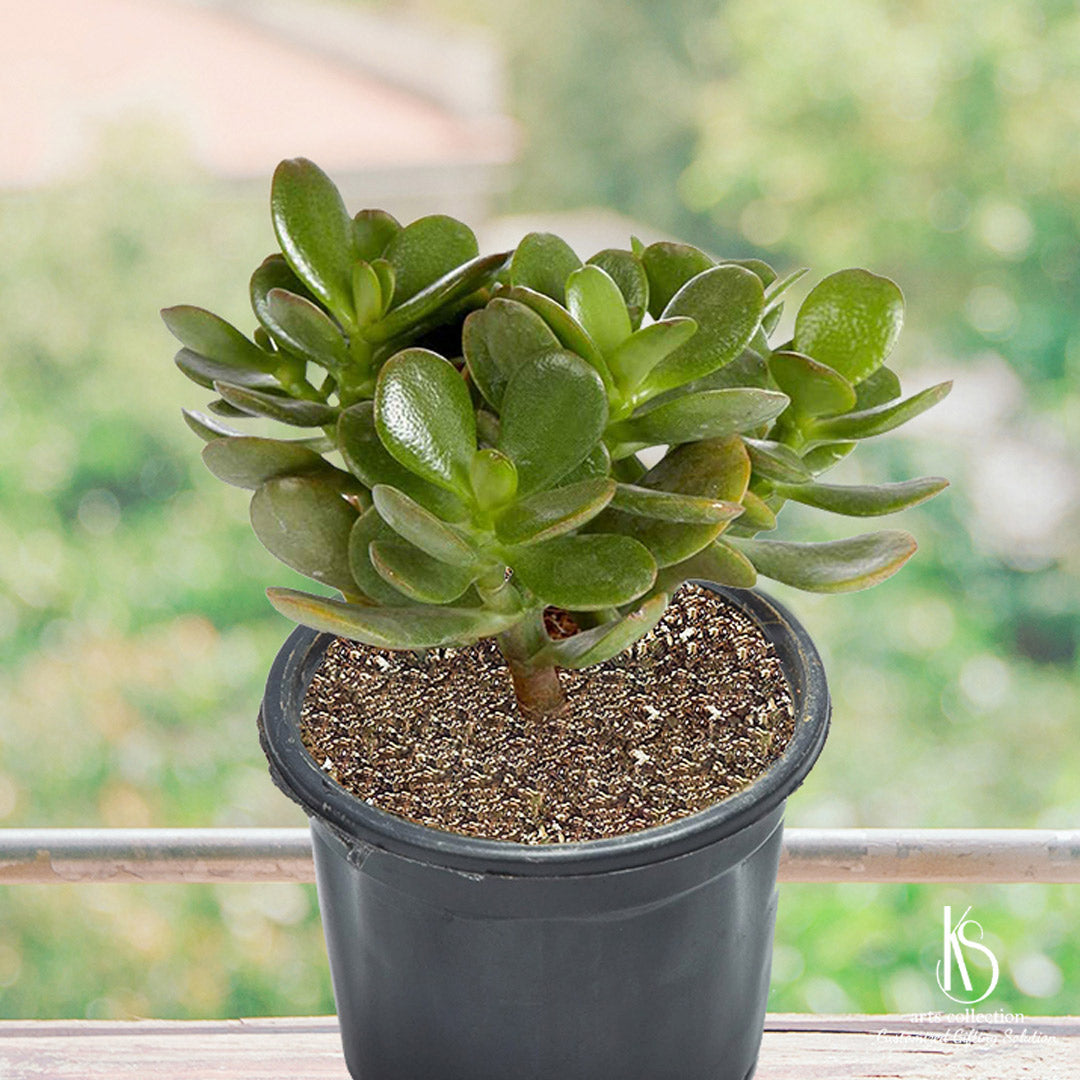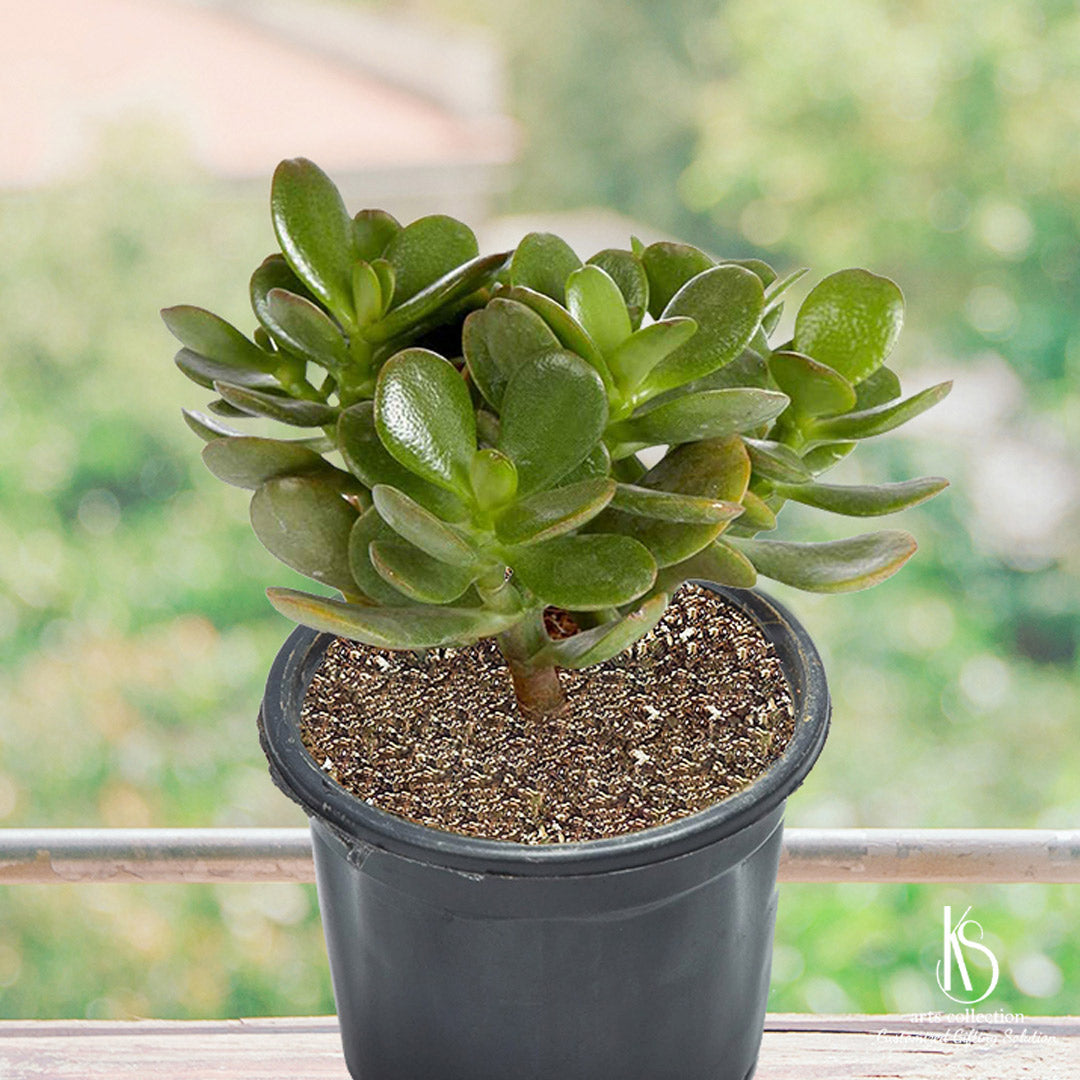KS ARTS COLLECTION
KS Kuberakshi Plant Crassula Ovata Succulent
KS Kuberakshi Plant Crassula Ovata Succulent
Couldn't load pickup availability
Brighten up any space with the KS Kuber Plant, a stunning Crassula Ovata Succulent. It's an ideal gift option from our Online Gift Shop.
Crassula ovata, commonly known as the jade plant, is a popular succulent plant native to South Africa. It belongs to the family Crassulaceae and is known for its thick, fleshy leaves and tree-like growth habit. Here are some key characteristics and care tips for Crassula ovata:
Appearance: Jade plants have thick, oval-shaped leaves that are usually glossy and deep green, but can sometimes have a red or yellow tint depending on the variety. The leaves are arranged in pairs or whorls along the stems, which become woody and tree-like as the plant matures. In the right conditions, jade plants can produce small, star-shaped white or pink flowers.
Watering: Jade plants are succulents, which means they have the ability to store water in their leaves and stems. Consequently, they have relatively low to moderate water requirements. To avoid overwatering and potential root rot, it's best to water your jade plant when the top inch of the soil feels dry. Allow the soil to completely dry out between waterings before providing more water. This approach helps mimic their natural habitat and ensures proper moisture balance for the plant's health.
Light: Jade plants prefer bright, indirect sunlight. They can tolerate some direct sunlight, especially in the morning or late afternoon, but too much direct sun can scorch the leaves. Place your jade plant near a window with filtered light or provide it with a few hours of direct sunlight each day.
Temperature: Jade plants are adaptable and can tolerate a wide range of temperatures. They prefer average room temperatures between 65-75°F (18-24°C).
Soil:To ensure healthy growth, it is important to provide Crassula ovata (jade plant) with well-draining soil. You can either purchase a soil mix specifically formulated for succulents or cacti, or create your own blend. If you choose to make your own, combine regular potting soil with perlite or coarse sand. This mixture will enhance drainage and prevent water from accumulating around the roots. It is essential to avoid using heavy or water-retaining soils, as they can lead to root rot, which can be harmful to the plant's health.
Fertilization: Fertilizing jade plants should be done with caution as they are not heavy feeders. Excessive fertilization can harm their health, so it's important to proceed sparingly. During the plant's active growing season, which typically occurs in spring and summer, you can use a balanced, diluted liquid fertilizer. It's essential to follow the instructions provided on the fertilizer packaging to ensure the correct dosage for your jade plant.
By fertilizing your jade plant appropriately, you can provide it with the necessary nutrients without overwhelming it. Remember, moderation is key when it comes to fertilizing jade plants..
Pruning: Jade plants have a natural tendency to develop a tree-like shape as they grow. You can prune and shape your jade plant to control its size and appearance. Prune selectively, removing any dead, damaged, or leggy branches. Propagating the pruned branches is also a popular way to propagate new jade plants.
Propagation: Jade plants are relatively easy to propagate. You can propagate them through stem or leaf cuttings. Allow the cuttings to callus over for a day or two, then plant them in a well-draining soil mix and water sparingly until roots develop.
Jade plants are popular houseplants and are believed to bring good luck and prosperity. With proper care and attention, they can live for many years and become treasured additions to your indoor garden.


